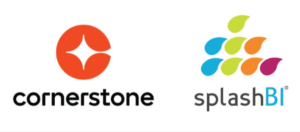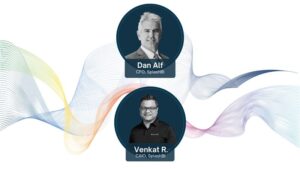Introduction
In the intricate dance of workplace dynamics, the spotlight is now shining brightly on the transformative power of diversity and inclusion strategy. Companies, big and small, are awakening to the idea that a diverse workforce is not just a checkmark on a corporate social responsibility list but a gold mine of innovation and creativity. In this era of progressive thinking, harnessing the potential of a diverse team isn’t just a matter of optics; it’s a strategic imperative. Enter the stage left: People Analytics. This game-changing approach is not just another corporate buzzword; it’s a powerful tool to shape a workplace that embraces differences and propels organizations into a future of endless possibilities. Additionally, it’s essential to emphasize that the Diversity and Inclusion strategy, along with the associated metrics, serves to an end rather than the final goal. These insights are critical tools used to inform and enhance organizational health, foster a positive culture, and promote a sense of belonging among all members of the team.Understanding the Power Play: What is People Analytics, Anyway?
Before we dive headfirst into the deep waters of how people analytics can revolutionize diversity and inclusion strategy, let’s get cozy with the concept. People Analytics is not rocket science, despite the fancy name. People Analytics uses all your People Data (employee’s personal demographic information like age, gender, location) as well as HR data like job role, salary etc. It’s like the Sherlock Holmes of HR – digging into your HR &, people demographic data to uncover insights (patterns, trends and outliers) about your workforce that may be hidden in plain sight. This isn’t about snooping on who ate the last donut in the breakroom; it’s about understanding your people – their strengths, weaknesses, aspirations, and yes, their differences.FAQs on People Analytics:
1. Is People Analytics just another HR fad? Nope, People Analytics is here to stay, like that classic song you can’t get out of your head. With the pace of business increasing steadily, in virtually every industry and role, leaders are leaning on data and analytics to make sure they have the information available to make informed, sound business decisions in the best interest of their team. Moreover, it’s important to acknowledge that People Analytics isn’t a novel concept; leaders have historically made decisions based on the available data. However, what sets the contemporary landscape apart is the unprecedented volume and scope of accessible data. With advancements in technology, leaders now have an abundance of data at their fingertips, and at a speed never seen before. It transcends the traditional approach of glancing at the breakroom to recognize diversity gaps; it’s about leveraging sophisticated analytics to gain nuanced insights into the intricacies of organizational dynamics, diversity, and inclusion. 2. Can small businesses benefit from People Analytics? Absolutely! Whether you’re a corporate giant or a startup, understanding your people is the secret sauce for success. Regardless of your company’s size or where you are in lifecycle (heavy growth/expansion, steady, decline), you will never be worse off having these insights at your fingertips. 3. Does People Analytics violate privacy? Not when it is done correctly! Fear not, it’s not Big Brother watching. People Analytics focuses on patterns and trends, not individual gossip. That being said, it’s also important to recognize & identify outliers. Identifying instances when a select few behave radically differently than the greater pack can help leaders understand if, how and when they need to change their processes or intervene to help course correct.The Diversity and Inclusion Dance: A Balancing Act
Now, let’s talk turkey about diversity and inclusion. Diversity and inclusion are important metrics that serve as a litmus test for culture and health of an organization. Diversity strategy is not just about ticking the boxes of gender, race, and age. It’s a symphony of backgrounds, perspectives, and experiences that harmonize into a masterpiece of innovation. However, achieving this utopian workplace isn’t a cakewalk; it’s more like a carefully choreographed dance.The Diversity Tango:
Beyond the Obvious: Diversity is not a checklist. It’s not about hiring the token representative from each demographic. It’s about embracing the richness that comes from different, life experiences and worldviews. It should be considered a metric, a datapoint but not a goal in and of itself. Diversity metrics can indicate diversity of experience, and when they are combined with HR data, they can provide insight in Representation, belonging and culture. Inclusive Leadership: It’s not enough to have diverse faces in the office if the decision-makers are a homogenous group. True inclusion starts at the top, with leaders who champion diversity in thought and action. Representation matters and so is creating a mindful culture.People Analytics: The Unsung Hero of Diversity and Inclusion
Now, here’s where the plot thickens. People Analytics is not just a data nerd’s delight; it’s the unsung hero of creating a workplace where everyone feels valued and heard. Where they feel a sense of personal belonging.The Analytics Awakening:
1. Identifying Bias: We’re all human, and that means we come with our own set of biases. People Analytics, armed with data, can shine a light on these biases, helping organizations address and rectify them. 2. Recruitment Revolution: Say goodbye to the ‘old boys’ club’ mentality in hiring. People Analytics can ensure that your recruitment process is fair and unbiased, giving everyone a shot at that corner office. 3. Retention Realities: Losing talent is like losing money. People Analytics can help predict who’s at risk of jumping ship, giving companies the chance to intervene and make necessary changes. 4. Promotion Panorama: Wondering why certain groups never seem to make it to the top? People Analytics can uncover patterns in promotions, ensuring that deserving candidates aren’t left in the shadows.Overcoming Skepticism: Addressing Concerns Head-on
Let’s not kid ourselves; change is hard. Some may see People Analytics as the big, bad wolf of the workplace. It’s time to debunk the myths and tackle the skepticism head-on.Addressing Concerns:
1. Privacy Paranoia: “Are they spying on us?” No, they’re not. People Analytics focuses on trends, not individual indiscretions. Your secret love for cat videos on company time is safe. 2. Algorithm Anxiety: Algorithms are not here to replace human judgment. They’re here to enhance it. People Analytics is a tool, not a replacement for good old-fashioned leadership. 3. Resistance Rebellion: Change is scary, and some folks resist it like cats resisting water. Communicate the benefits, show the successes, and watch the skeptics turn into believers.The Future is Now: Embracing the Data-Driven Diversity Dream
So, what does the future hold for the marriage of People Analytics and Diversity and InclusionThe Crystal Ball View:
1. Cultivating Culture: People Analytics is not just about numbers; it’s about creating a culture where diversity and inclusion are not buzzwords but a way of life. It’s about weaving it into the very fabric of your organization. 2. Innovation Incubator: Imagine a workplace where every idea, no matter who it comes from, is given a fair shot. People Analytics can turn this dream into a reality, fuelling innovation and creativity. 3. Global Galore: In our interconnected world, the workplace is no longer confined to physical borders. People Analytics can help organizations navigate the global landscape, ensuring that diversity and inclusion are not lost in translation.Conclusion: Riding the Wave of Change
In the grand scheme of things, diversity and inclusion metrics aren’t just checkboxes to be ticked. They are the driving forces behind a workplace that thrives, adapts, and innovates. People Analytics, with its data-driven prowess, is not the magic potion that will instantly transform a company, but it’s the guiding star, illuminating the path toward a more inclusive future. So, let’s ride the wave of change, embrace the power of diversity and inclusion, and let People Analytics be the compass that leads us to a workplace where everyone can shine, regardless of their background or beliefs. Diversity and Inclusion: Using People Analytics to Build a More Inclusive Workforce – it’s not just a tagline; it’s the roadmap to a better tomorrow.
Unlock the power of People Intelligence with SplashBI for HR
Curate data-driven decisions for improved business outcomes.








